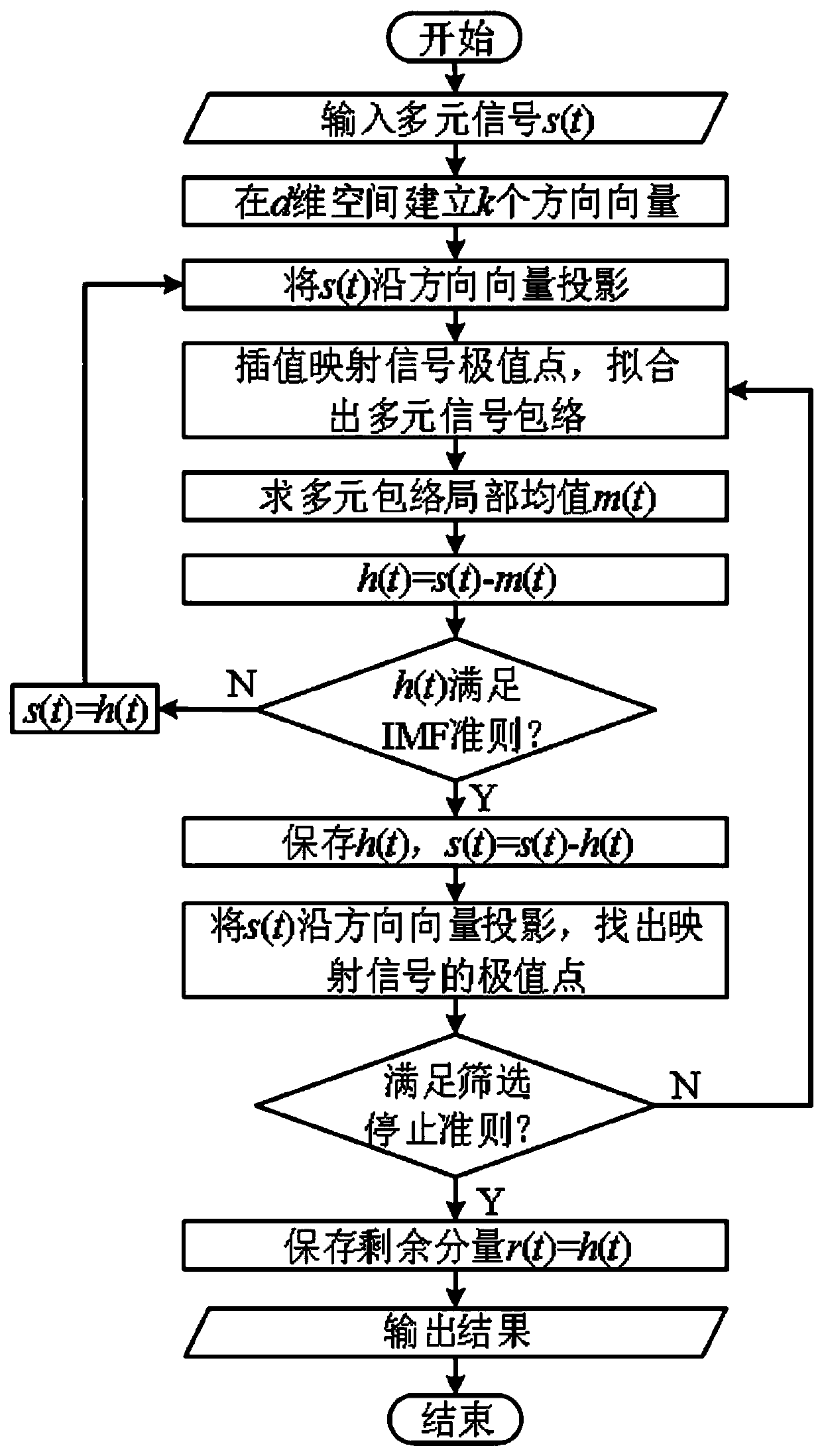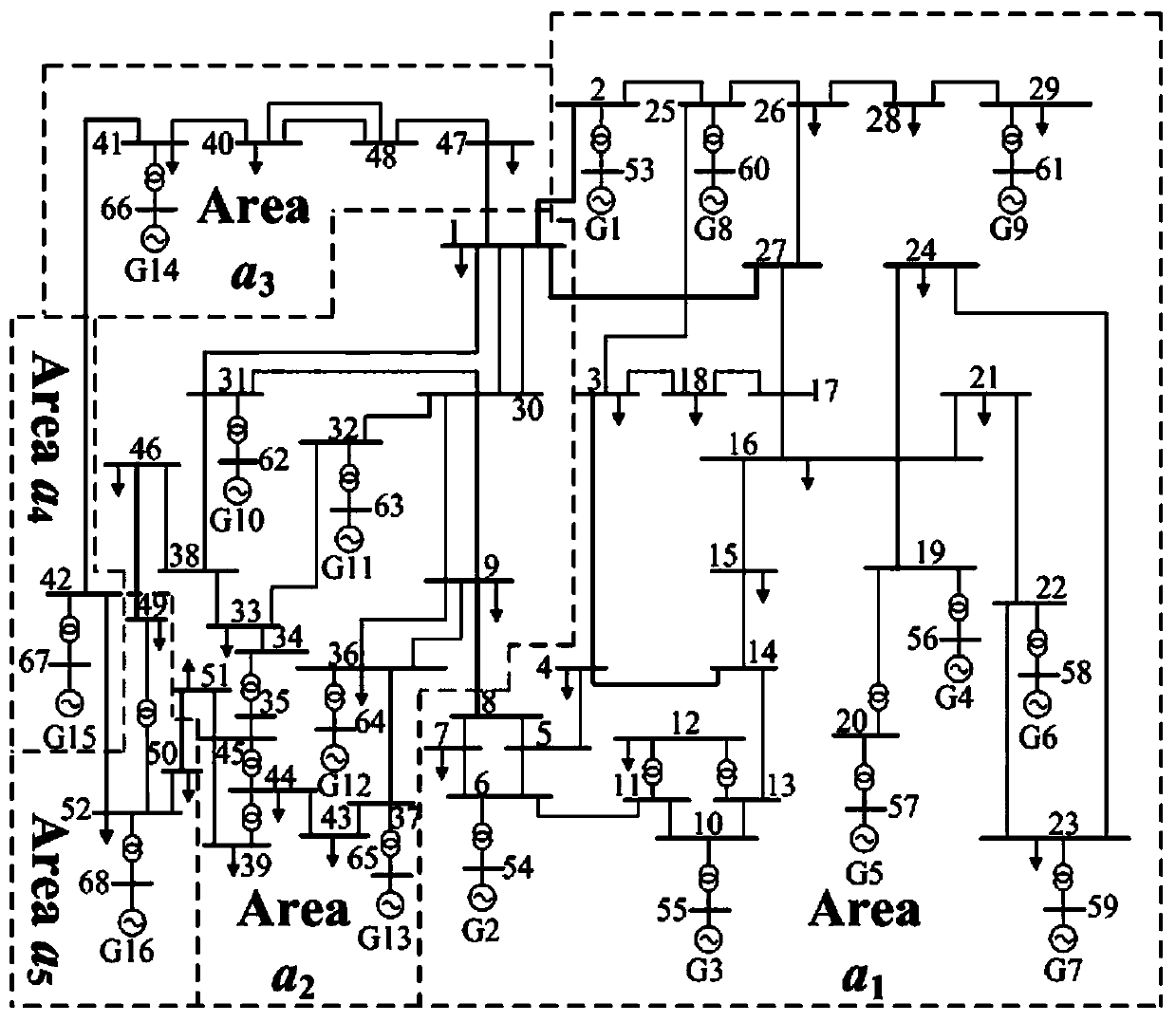Method for identification of low-frequency oscillation mode of electric power system based on Hilbert-Hung and MEMD
A low-frequency oscillation and identification method technology, applied in system integration technology, information technology support system, reducing/preventing power oscillation, etc., can solve problems such as inability to realize multi-channel cooperative identification
- Summary
- Abstract
- Description
- Claims
- Application Information
AI Technical Summary
Problems solved by technology
Method used
Image
Examples
Embodiment 1
[0120] A method for identifying low-frequency oscillation modes of power systems based on Hilbert-Hung and MEMD, comprising the following steps:
[0121] Utilize the real-time data acquisition function of PMU equipment, upload the measurement information of transmission lines and busbar nodes in the actual power grid to the data concentration unit (phasor data concentrator, PDC), and then extract key information for mode identification, where the measurement information includes power generation The rotor angle signal of the machine, the active power in the tie line, the frequency, the speed, and the bus voltage.
[0122] 101: Introduce the MEMD algorithm to preprocess the multivariate PMU measurement information, and obtain the IMF signals representing different oscillation modes in each measurement channel;
[0123] 102: Use the Teager energy operator to estimate the relative energy of the IMF signal in each channel, and identify the key IMF signal containing the dominant os...
Embodiment 2
[0128] The scheme in embodiment 1 is further introduced below in conjunction with specific calculation formulas and examples, see the following description for details:
[0129] 201: Obtain the state measurement information of the power system from the PMU, and standardize the state measurement information;
[0130] Among them, standardization is a process of calculating standard scores. The standardized data is simple and easy to compare, and can fully demonstrate the relationship between the standard deviations of the data and retain the original information of the data.
[0131] 202: The standardized generator rotor angle signal is used as the input signal to be identified, and the MEMD method is introduced to preprocess the multivariate measurement signal to obtain multi-channel IMF signals representing different frequency scales.
[0132] First, a uniformly distributed direction vector set is established in the d-dimensional space, and the multivariate measurement informa...
Embodiment 3
[0223] Below in conjunction with specific experimental data, the scheme in embodiment 1 and 2 is carried out feasibility verification, see the following description for details:
[0224] This example takes the 16-machine 68-node system as an example for simulation analysis. The 16-machine 68-node test system is as follows: image 3 shown.
[0225] In order to verify the feasibility of the method proposed in this paper, the time-domain simulation analysis is carried out through the PSS / E simulation software. The fault setting is that a three-phase short-circuit fault occurs between the bus 46 and the bus 49 in 0.1s, and the fault is removed in 0.2s. Taking generator G1 as a reference machine, the rotor angle signals of other generator sets relative to generator G1 are used as measurement signals. There are 15 sets of relative rotor angle signals for 16 generators, and the sampling time is 0.01s. Figure 4 It is the swing curve of the rotor angle of each generator set relative ...
PUM
 Login to View More
Login to View More Abstract
Description
Claims
Application Information
 Login to View More
Login to View More - R&D Engineer
- R&D Manager
- IP Professional
- Industry Leading Data Capabilities
- Powerful AI technology
- Patent DNA Extraction
Browse by: Latest US Patents, China's latest patents, Technical Efficacy Thesaurus, Application Domain, Technology Topic, Popular Technical Reports.
© 2024 PatSnap. All rights reserved.Legal|Privacy policy|Modern Slavery Act Transparency Statement|Sitemap|About US| Contact US: help@patsnap.com










